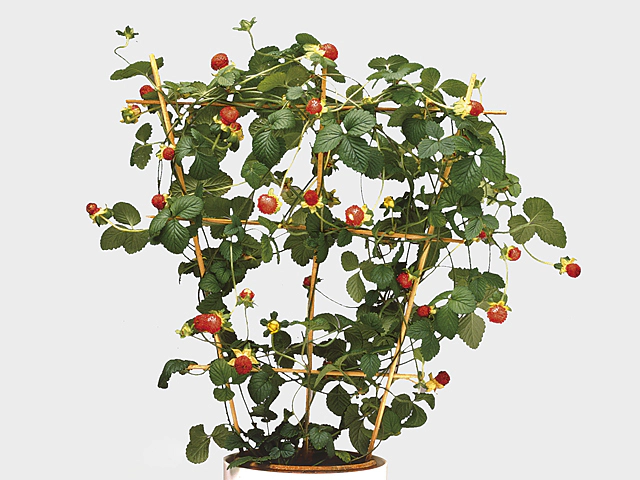Duchesnea indica

| Winter hardness | Good (USDA-zone 5, 6) |
| Flower color | Yellow |
| Soil fertility | No poor soils |
| Plant height | 10 - 20 cm |
| Flowering month(s) | May; June; July; August; September; October |
| Light conditions | Sunny |
| Moisture requirements | Moist; Well-drained |
Duchesnea indica, commonly known as Indian strawberry or mock strawberry, is a delightful plant with numerous attractive features. This perennial herb is well-known for its ability to survive harsh winters, making it ideal for gardeners in USDA zones 5 and 6. Its winter hardiness is rated as good, ensuring that it can withstand the cold temperatures and continue to thrive.
One of the most striking characteristics of Duchesnea indica is its vibrant yellow flowers. These beautiful blossoms can be seen from May to October, adding a splash of color and charm to any garden or landscape. The bright yellow hue not only adds visual appeal but also attracts pollinators like bees and butterflies, contributing to the biodiversity of the area.
When it comes to soil fertility, Duchesnea indica thrives best in well-drained soil that is not overly poor. While it can tolerate a range of soil types, it prefers moist conditions. Properly draining the soil is crucial to prevent waterlogging, which can negatively impact the plant's health and growth. However, with the right conditions, this plant can flourish and spread effectively.
In terms of size, Duchesnea indica is a compact plant, typically reaching a height of 10 to 20 cm. This petite stature makes it suitable for various garden settings, including borders, rock gardens, or container gardening. Its low-growing habit, along with its beautiful flowers, makes it an excellent choice for adding charm and color to small spaces.
Aside from its ornamental value, Duchesnea indica also has various practical uses. The plant produces small, strawberry-like fruits, although they are not considered edible for human consumption. However, they do attract birds, making it a valuable addition for bird enthusiasts who wish to attract these feathered visitors to their yards.
When it comes to light requirements, Duchesnea indica prefers sunny locations. Planting it in an area where it can receive ample sunlight helps promote healthy growth and blooming. However, it can tolerate partial shade, making it adaptable to different light conditions. It is always a good practice to observe the specific light conditions in your garden and choose a suitable spot accordingly.
Overall, Duchesnea indica is a charming and versatile plant. Its winter hardiness, yellow flowers, adaptability to different light conditions, and preference for moist, well-drained soil make it an excellent choice for gardeners looking to add beauty and biodiversity to their outdoor spaces. Whether as a border, ground cover, or container plant, Duchesnea indica is sure to make a delightful addition to any garden.
Market availability index by month:
| Jan. | Feb. | Mar. | Apr. | May | Jun. | Jul. | Aug. | Sep. | Oct. | Nov. | Dec. |
|---|---|---|---|---|---|---|---|---|---|---|---|
| 1 | 2 | 2 | 3 | 4 | 3 | 2 | 2 | 1 | 1 | 1 | - |